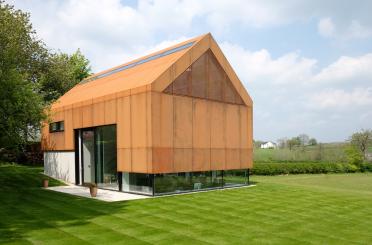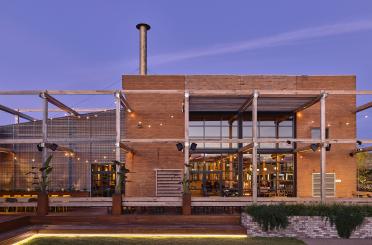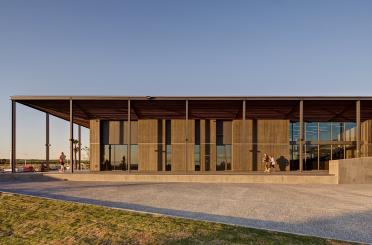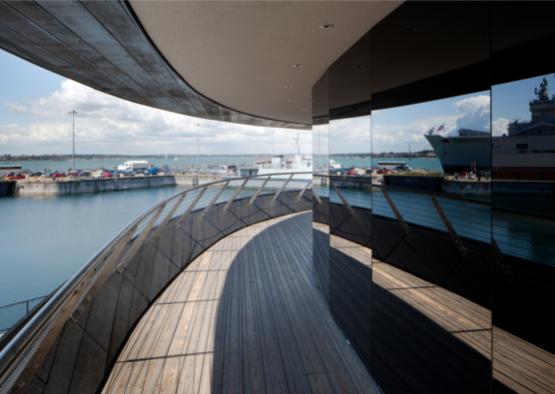
Overview
The Mary Rose was a 16th century warship of English King Henry VIII’s navy, sunk in 1545 in the Solent while leading an attack against a French invasion fleet.
The wreck was rediscovered in 1971 and a surviving section salvaged in 1982 by the Mary Rose Trust. The priceless haul of recovered items included weapons, sailing equipment, naval supplies and a wide array of objects used by the crew.
The Mary Rose Museum (opened in 2013) is the centrepiece of the Portsmouth Historic Dock, with a second stage due to begin at the end of 2015.
The design by Wilkinson Eyre Architects (architect and design team leader) and Pringle Brandon Perkins+Will (architect for the interior) is a story of collaboration, with the project team combining delicate conservation, contemporary architecture and specialist technical expertise to create a truly unique design.
Story and pictures by special arrangement with timber+DESIGN International magazine (www.timberdesignmag.com)
Structure
Working with an antiquity as precious and delicate as the Mary Rose required an architectural solution that would complement rather than distract. The challenge was finding the right architectural language to articulate the story of the museum, while adding a confident piece of contemporary architecture to the location.
The resulting simple, pure elliptical form is derived from toroidal geometry, echoing the shape of the Mary Rose. Western red cedar cladding is reminiscent of the ship's historic hull, showcasing the innovative carvel construction methods of the 16th century. The black-stained timber strengthens the maritime link – reflecting England's vernacular boat shed architecture.
The challenges of the site's historic context, adjacent to HMS Victory and Admiralty buildings, included the fact that it is a ‘listed’ late 18th century dry dock. Thus, the museum building height was kept as low as possible to remain sensitive to the proportions and scale of the surrounding buildings.
Two rectangular pavilions are attached to each side of the main building, one housing the main entrance reception, café and shop, and the other occupied by the Learning Centre and main plant room. The overall composition is a contemporary and elegantly simple form with an air of mystery.
Exterior
Like crafting a jewellery box to house a precious gem is how the design team described the structure to house the only 16th century warship on display anywhere in the world.
The purpose-built, multi-award-winning museum reunites surviving elements of Henry VIII’s favourite fighting ship with many of her artefacts and crew – capturing the moment in time when she sank about 470 years ago.
Designed from the inside out, the building takes many of its cues from the historic ship, allowing its hull, artefacts and exhibitions to take centre stage and create a visitor experience befitting this remarkable piece of history.
The simple, pure elliptical form of the building is based on toroidal geometry and echoes the shape of the vessel. The main building is clad in western red cedar planks of various lengths and widths, stained and laid to mimic the carvel boat construction method of the 16th century, where timbers were fixed with a minimal joint to allow expansion and to avoid overlapping.
Inscriptions drawn from the ciphers used by the crew to identify their personal belongings are carved into the shell. The main roof is clad with an aluminium standing seam system with a zinc finish, the geometry of which is derived from the cut of torus.
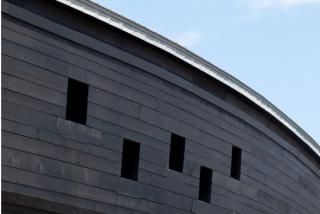
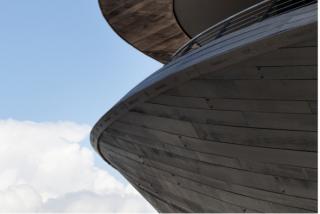
Interior
At the heart of the project – within a carefully controlled ‘hot box’ environment – is the starboard section of the salvaged Mary Rose hull.
The interior design attempts to capture the frozen moment seconds before the warship capsized and sank on 19 July 1545. After painstaking archaeological excavation and recording of the exact location of every find, the project team could ‘see’ inside the Mary Rose and reunite the original contents - fittings, weaponry, armament and possessions – deck-by-deck.
A virtual hull was constructed to represent the missing port side with all the guns on their original gun carriages, cannonballs, gun furniture, stores, chests, rope and rigging. Visitors enter between the conserved starboard section of the hull and the virtual hull on three levels, seeing all the main shipboard material in context as though they are on board.
Pringle Brandon Perkins+Will principal Chris Brandon says the museum is the only one in the world to take its inspiration from the archaeological find itself. “Our role was to create a showcase for the Mary Rose and her artefacts befitting their significance, so we designed a museum that would recreate the experience of being on board the ship hundreds of years ago and created a context gallery to highlight its precious contents.”

